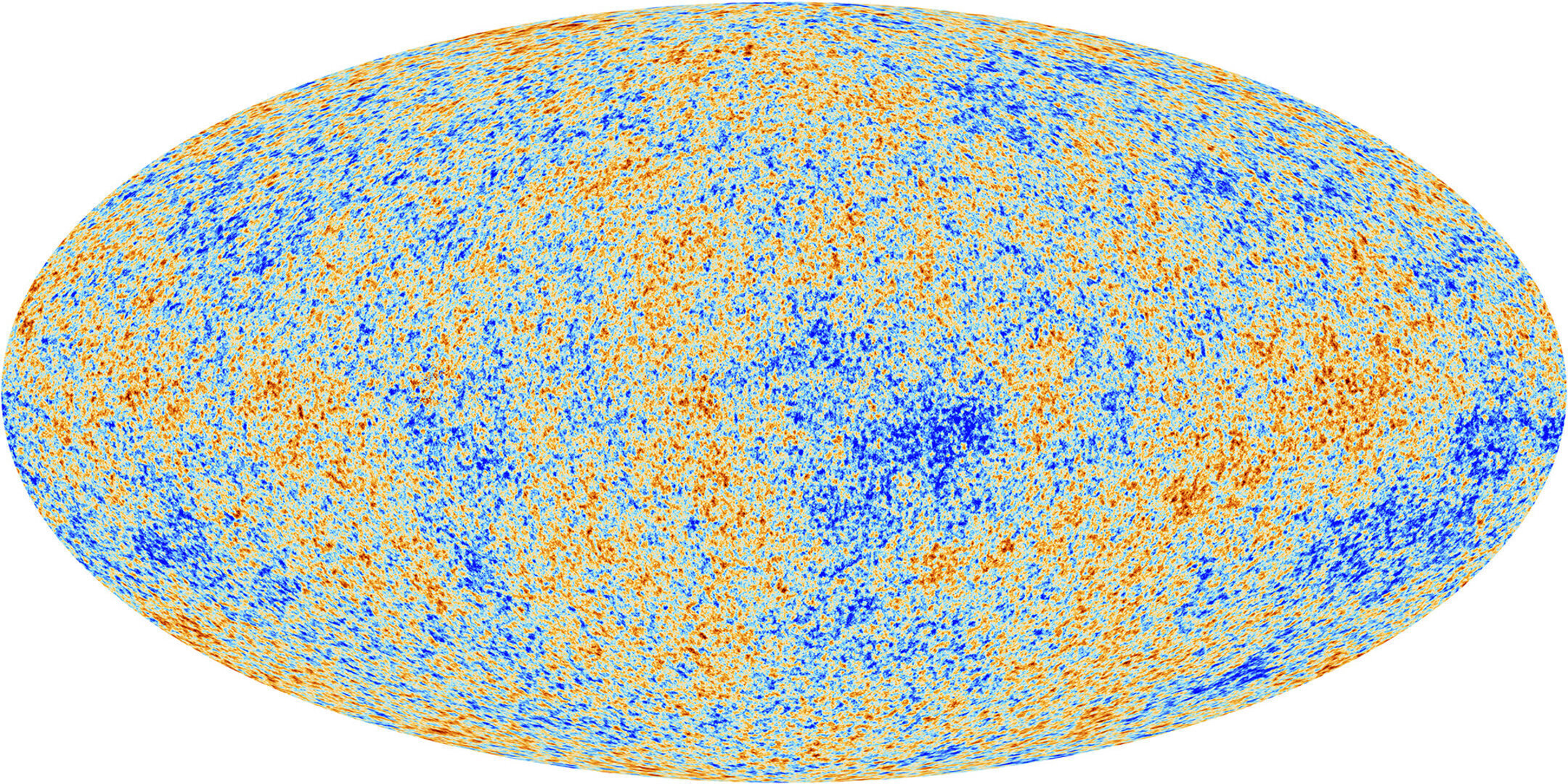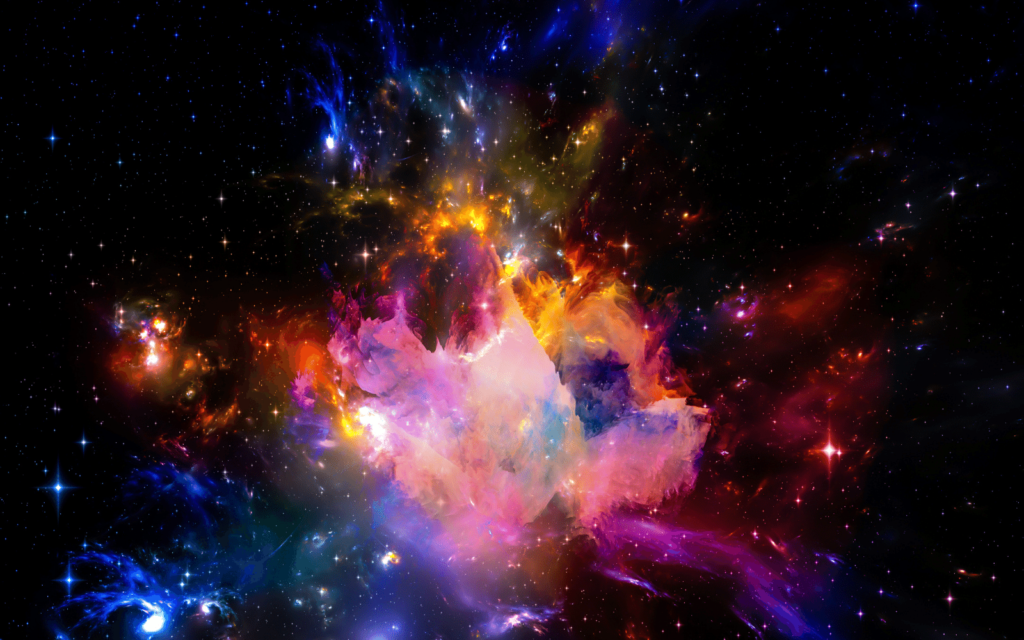The Cosmic Microwave Background (CMB for short), is light: the oldest and most distant light that we can see in the entire universe. It comes from soon after the Big Bang – which is considered to be the beginning of the universe.
However, it isn’t made up of light that you or I are able to see with the naked eye. The type of light we can see is called visible light, but other types of light exist. Microwaves are a type of light, and so are the X-rays that we use to check for broken bones, and the radio waves that let us listen to music in the car.
At first, the CMB was very energetic X-ray light. Over time, it has lost energy and become lower-energy microwaves.

The CMB is the light from the beginning of the universe. At this point in time, the universe was very hot and dense, and full of particles called electrons and protons. These particles have an electric charge, and when light reached one of the particles, the electric charge would send the light off in another direction. This stopped the light from travelling very far.
Cooling down
Over time though, the universe expanded and cooled down. Eventually, once the universe became cool enough, the electrons and protons began to bind together and form atoms of hydrogen. These atoms have no electric charge, so they don’t affect light in the same way that electrons and protons do on their own. Light could pass through them and on through the universe as if it were completely empty.
The universe cooled at the same rate all over, so this process happened at the same time everywhere. Suddenly, light could travel very far and fast from all over the universe at the same time. This light is still travelling today, and it’s what reaches us on Earth as the CMB now.
The CMB light was always around in the universe but couldn’t travel far at all until the first atoms formed. In fact, we know that it was released 380,000 years after the Big Bang. This sounds like a long time between the Big Bang and CMB release, but since the universe is nearly 14 billion years old, this happened when the universe was very young.
The CMB tells us lots of important information about what the universe was like long ago. According to the Big Bang theory, the early universe was very hot and full of radiation. As the universe expanded and cooled down, this radiation would eventually be released. This is exactly what we see now as the CMB. It even has the temperature predicted by the Big Bang theory, and this is why we can say the CMB is evidence that the Big Bang theory is correct.
An accidental discovery
The CMB was discovered accidentally. Two scientists in the US, Robert Wilson and Arno Penzias, were using a microwave telescope and kept seeing the same extra signal wherever they pointed the antenna. They thought the extra signal might be caused by a fault in their telescope – or even by pigeon poo on their antenna.

Eventually they realised they were the first people to ever detect the CMB, which the Big Bang theory had predicted would exist. They won the Nobel prize for their discovery.
Since then, we have sent many telescopes into space to get better and better images of the CMB. Looking at the oldest light in the universe can helps us to understand how everything we see today came to be.
- is a Senior Research Associate at the Institute of Cosmology and Gravitation, University of Portsmouth
- This article first appeared on The Conversation




